|


|
Data processing - DrWin
- Processing of diffraction pattern or selection
- Background approximation (by polynomial or user curve)
- Separation of K-doublets
- Peak seach and determination of their anglular positions
- Approximation of reflection profiles by pseudo-Voigt function (for the entire array or independently for each peak)
- Calculation of peak heights and their integral intensities
- Calculation of FWHM of reflections
|
|
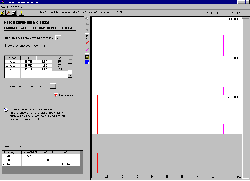
|
Quantitative phase analysis - Quan
- Overall analysis of multicomponent mixture
- Analysis of n-component system
- Analysis of sample with known mass absorption coefficient
- Method of internal standard
- Method of Reference Intensity Ratios (RIR’s)
- Method of additives
- Method of reduction
|
|
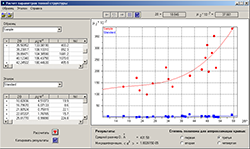
|
Calculation of average size of coherent domains and of microstrains - Size&Strain
- Calculation of size of coherent domains and microstrains by the method of second central moments
- Calculation of instrumental line broadening
- Application of absorption correction to the samples with another composition
|
|
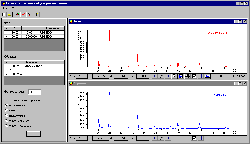
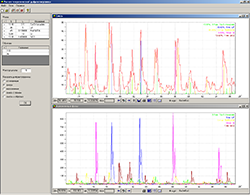
|
Calculation of theoretical diffraction pattern - TheorPattern
- Simulation of diffraction patterns of multicomponent mixtures from structural data
- Account for of instrumental factor
- Account for texture and crystalline size for each component
- Comparison of simulated and measured diffraction patterns
- Integrated package of geometrical crystallography
|
|

|
Auto indexing of Powder Diffraction Pattern - Ind
- Determination of Bravais lattice type
- Choice of unit cell
- Computation of Miller indices for selected lines
- Bar graph of input diffraction pattern
|
|
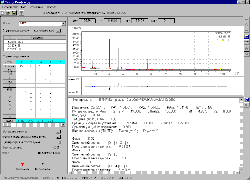
|
Full profile analysis by Rietveld method - Rietveld
- Refinement of crystal structures from X-ray powder diffraction data of single crystalline phases and mixtures
- Calculation of polynominal and physical background
- Independent refinement of U, V, W, X, Y profile for different phases and for different groups of reflections
- Refinement of unit cell parameters, atomic and thermal parameters, occupations of atomic positions for each phase
- Choice of refinement strategy
- Control of Rrefinement conditions
- Calculation of five R-factors
|
|
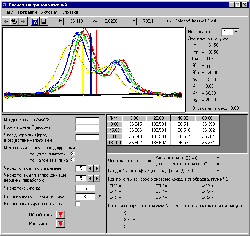
|
Residual stress analysis - MacroStress
- Calculation of peak angular position from center of gravity or from peak topapex
- Correcting of correction matrix
- Calculation of linear, planar and volumetric stresses
- Calculation of stress deviations
|
|
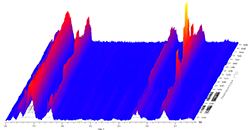
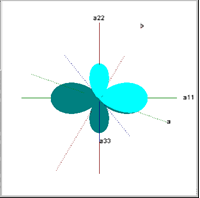
|
High temperature-X-ray diffraction - Thermo
- 3D-imaging of measured data in “diffraction angle - intensity - temperature” co-ordinates
- Calibration of the measured data set by internal or external standard
- Refinement of unit cell parameters of the calibrated data set
- Determination of phase transition points
- Determination of thermal expansion coefficients (TEC) in different directions and thermal deformation tensors
- Building of TEC figures
|
|
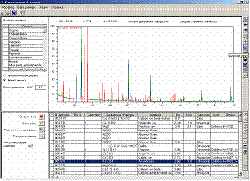
|
Qualitative phase analysis and access to the Ppowder Diffraction File database - Retrieve and Search-Match
- Use of PDF-2/PDF-4 database of International Center of Diffraction< Data (ICDD) for qualitative analysis
- Automatic or manual search algorithm
- Creation of user subbases for search facilitation
- Addition of user standards into subbases
- Qualitative phase analysis by different criteria, bases (subbases)
- Analysis of lines matched by angular position and intensity
- Quantitative phase analysis by Reference Intensity Ratios (RIR’s) method
- Access to the data base including search by selected criteria
|